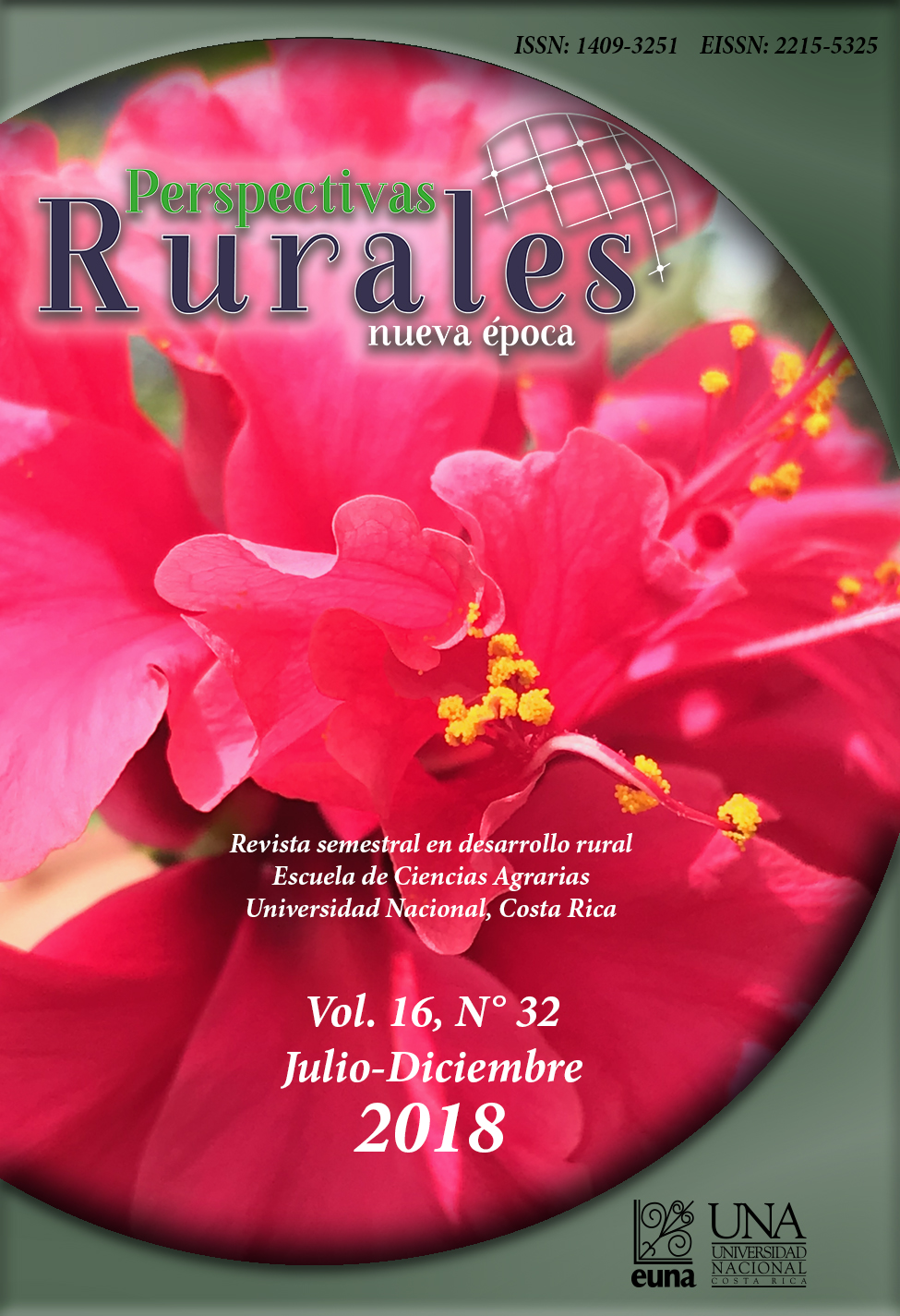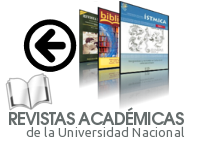Artisanal gastronomy and local tourism: the meaning of Cassoleta Cheese, Castellón (Spain)
DOI:
https://doi.org/10.15359/prne.16-32.8Keywords:
culinary landscapes, regional development, rural tourismAbstract
Local products are one of the most outstanding indicators of identity, conveying the cultural, natural and rural authenticity of a destination. This sense of place is communicated to visitors and tourists through the narratives of local actors – for example, the sellers of local produce. This investigation is intended to analyze the meanings that these agents attach to Cassoleta cheese, a local artisanal food produced in the Spanish region of Valencia. The methodology used was based on five semi-structured interviews with local sellers conducted in the city of Castellón, the capital of the province, where there is a long tradition of producing this cheese. Results of this research offer insights into the narratives linked to Cassoleta cheese, which are predominantly based on its historical connection to the territory, its daily consumption by local inhabitants thanks to its versatility in the kitchen, and its appeal to tourists who seek artisanal products. This article provides a series of theoretical and practical implications; on the one hand, theoretical analysis may serve to broaden the field of study of culinary tourism and its relation to gastronomy as an element of cultural and rural identity. On the other hand, understanding local produce from the perspective of actors in the region can help promote a destination based on their authentic narratives.
References
Bardhi, F., Ostberg, J. y Bengtsson, A. (2010). Negotiating cultural boundaries: Food, travel and consumer identities. Consumption, Markets and Culture, 13(2), pp.133-157.
Bessière, J. y Tibère, L. (2013). Traditional food and tourism: French tourist experience and food heritage in rural spaces. Journal of Science of Food and Agriculture, 93, 3420-3425.
Blanco, M. y Gómez, C. (2010). La ruta agroturística del queso Turrialba. En: H. Hernando Riveros, A. Lucio-Paredes y M. Blanco (eds.), Una mirada a experiencias exitosas de agroturismo en América Latina. San José: Instituto Interamericano de Cooperación para la Agricultura.
Boukris, L. (2013). Du produit touristique à la figure territoriale patrimonialisée: La route du fromage Turrialba, Costa Rica. Food Geography, 2, pp. 31-41.
Conselleria de Agricultura, Pesca y Alimentación (2008). Diari Oficial de la Comunitat Valenciana, núm. 5924, 31.12.2008.
Delfosse, C. (2017). Les crémiers-fromagers. Entre commerce de proximité et gastronomie. París: Presses Universitaires de France.
Dixit, S. (2019). The Routledge Handbook of Gastronomic Tourism. Abingdon: Routledge.
Eurostat (2019). Where does our cheese come from? Disponible en: http://ec.europa.eu/eurostat.
Everett, S. (2012). Production places or consumption spaces? The place-making agency of food tourism in Ireland and Scotland. Tourism Geographies, 14(4), pp. 535-554.
Fusté Forné, F. (2015). Cheese tourism in a World Heritage Site: Vall de Boí (Catalan Pyrenees). European Journal of Tourism Research, 11, pp. 87-101.
Fusté Forné, F. (2016). Tasting cheesescapes in Canterbury (New Zealand). New Zealand Geographer, 72(1), pp. 41-50.
Fusté-Forné, F. y Berno, T. (2016). Food tourism in New Zealand: Canterbury’s foodscapes. Journal of Gastronomy and Tourism, 2, 71-86.
Hall, C. M. (2016). Heirloom products in heritage places: Farmers markets, local food, and food diversity. En: D. Timothy (ed.), Heritage Cuisines: Traditions, identities and tourism. Abingdon: Routledge.
Hall, C. M. y Gössling, S. (2013). Sustainable culinary systems: Local foods, innovation, and tourism and hospitality. Abingdon: Routledge.
Hall, C. M. y Gössling, S. (2016). Food Tourism and Regional Development: Networks, Products and Trajectories. Abingdon: Routledge.
Hillel, D., Belhassen, Y. y Shani, A. (2013). What makes a gastronomic destination attractive? Evidence from the Israeli Negev. Tourism Management, 36, 200-209.
Kim, S. y Ellis, A. (2015). Noodle production and consumption: From agriculture to food tourism in Japan. Tourism Geographies, 17, 151-167.
Levitt, J. A., Zhang, P., Di Pietro, R. B. y Meng, F. (2017). Food tourist segmentation: Attitude, behavioral intentions and travel planning behavior based on food involvement and motivation. International Journal of Hospitality and Tourism Administration, pp.1-27.
Millán, G., Morales, E. y Pérez, L. M. (2014). Turismo gastronómico, denominaciones de origen y desarrollo rural en Andalucía: situación actual. Boletín de la Asociación de Geógrafos Españoles, 65, pp.113-137.
Ministerio de Agricultura, Alimentación y Medio Ambiente del Gobierno de España (2018). Catálogo Electrónico de Quesos de España. Disponible en: http://alimentación.es.
Sánchez-Cañizares, S. M. y López-Guzmán, T. (2012). Gastronomy as a tourism resource: profile of the culinary tourist. Current Issues in Tourism, 15(3), pp. 229-245.
Sidali, K. L., Kastenholz, E. y Bianchi, R. (2015). Food tourism, niche markets and products in rural tourism: Combining the intimacy model and the experience economy as a rural development strategy. Journal of Sustainable Tourism, 23, pp.1179-1197.
Sims, R. (2010). Putting place on the menu. The negotiation of locality in UK food tourism, from production to consumption. Journal of Rural Studies, 26(2), pp.105-115.
Staiff, R. y Bushell, R. (2013). The rhetoric of Lao/French fusion: Beyond the representation of the Western tourist experience of cuisine in the world heritage city of Luang Prabang, Laos. Journal of Heritage Tourism, 8, 133-144.
Stone, M. J., Soulard, J., Migacz, S. y Wolf, E. (2018), Elements of memorable food, drink, and culinary tourism experiences. Journal of Travel Research, 57(8), 1121-1132.
Thomé, H., Vizcarra, I. y Espinoza, A. (2015). Performancia y fractalización como herramientas de metabolización de los espacios rurales. El caso de la Ruta del Queso y el Vino de Querétaro. Spanish Journal of Rural Development, 6(1), pp. 29-44.
Downloads
Published
How to Cite
Issue
Section
License
![]()
Revista Perspectivas Rurales. Nueva Época se encuentra bajo una licencia Creative Commons Reconocimiento-NoComercial-CompartirIgual 4.0 Internacional License.
Creado a partir de la obra en http://www.revistas.una.ac.cr/index.php/perspectivasrurales
Los autores/as que publiquen en esta revista aceptan las siguientes condiciones:
- Los autores/as conservan los derechos de autor y ceden a la revista el derecho de la primera publicación, con el trabajo registrado con la Licencia Creative Commons Atribución-NoComercial-CompartirIgual 4.0 Internacional, que permite a terceros utilizar lo publicado siempre que mencionen la autoría del trabajo y a la primera publicación en esta revista.
- Los autores/as pueden realizar otros acuerdos contractuales independientes y adicionales para la distribución no exclusiva de la versión del artículo publicado en esta revista (p. ej., incluirlo en un repositorio institucional o publicarlo en un libro) siempre que indiquen claramente que el trabajo se publicó por primera vez en esta revista.
- Se permite y recomienda a los autores/as a publicar su trabajo en Internet (por ejemplo en páginas institucionales o personales) antes y durante el proceso de revisión y publicación, ya que puede conducir a intercambios productivos y a una mayor y más rápida difusión del trabajo publicado.






 :
: 
